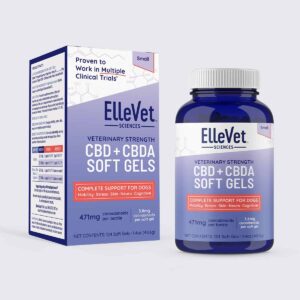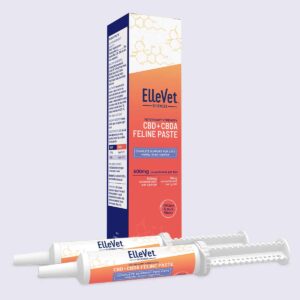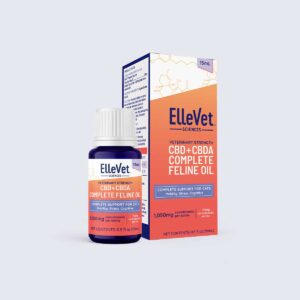When your dog starts itching, most dog owners immediately worry about fleas. But what happens if you’ve checked your dog thoroughly and don’t see any signs of a flea infestation?
After you celebrate, there are a few more potential causes of a dog itching with no fleas to consider. We have information about what may make a dog itchy and what you should do if your dog suddenly starts itching.
What Causes Itchiness?
When any animal itches, it’s known in the veterinary world as pruritus. Pruritus is the most common dermatological issue faced by many animals, including dogs, but it isn’t a disease or diagnosis all on its own.
Itching can be challenging to narrow down, as it doesn’t always appear localized in any specific area (like the feet, for example). Some dogs experience an unpleasant sensation that drives them to itch their entire body, stopping only with areas they cannot contort themselves to reach.
The skin is full of nerves. When the need to itch gets sent down a specialized set of fibers, it travels through the spinal cord, into the thalamus, and eventually into the brain’s sensory cortex. The type of fibers determines the specific itching sensation — myelinated fibers trigger a prickling response, while unmyelinated fibers are behind a burning itch sensation.
Depending on the trigger, different mediators are then released into the body. If your dog has an allergy to something it has come in contact with, it may release histamines. If fungi or bacteria are present, the body may release proteases instead.
These mediators are meant to rid the allergen from the body, although they are also the cause of the signs and symptoms we associate with an allergic reaction.
Skin Conditions
A skin condition or skin disease is one of the most common reasons for a dog itching with no fleas. There is an abundance of skin conditions out there, each triggered by a different factor. Bacterial and fungal infections (like yeast infections, ringworm, or mange) and autoimmune conditions that impact the skin are just a few issues that can mimic a flea infestation.
Dogs can pick up these conditions in various ways. Some may come from the environment, as mange and ringworm can be incredibly contagious (even from dogs to humans and vice versa).
Others may be genetic or a side effect of taking other medications, like antibiotics. Because of this, diagnosis by your veterinarian is crucial, as there is no effective one-size-fits-all management.
Allergies
Skin allergies are another reason for a dog itching without fleas being present. Dogs can deal with various allergy triggers — environmental allergies, seasonal allergies, food allergies, etc. Some of the most common allergens that dogs have allergic reactions to include pollen, mold, dust mites, wheat, and dairy.
When your dog comes into contact with an allergen, its body reacts by doing everything it can do to rid it from the body. In many cases, the responses to these allergens are directly related to how that allergen has impacted the body.
For example, inhaled allergens (like pollen) elicit respiratory responses like sneezing. Topical allergens, like fabric softener or shampoo, are more likely to cause itching and irritated skin, as they’re usually in direct contact with the skin.
Dogs can also develop a condition known as contact dermatitis, where your dog’s skin overreacts to a specific allergen. They can also be allergic to flea bites, and the reaction can continue long after you have treated the flea infestation.
Fleas and Pests
Even if you don’t see fleas in your dog’s coat, you may still be dealing with them (or another type of pest that can wreak havoc on the skin). Unless you’re dealing with a full-blown infestation, you likely won’t notice fleas jump off or onto your dog.
Using a white washcloth or towel is one trick to verifying that fleas are present on your dog. Dragging that cloth over your dog may encourage fleas to jump onto it, or you may be more easily able to see flea dirt (those tell-tale black specks).
Some people prefer to wear a pair of clean, white socks and walk around the house, using themselves as bait to trick fleas into jumping onto them instead. If you see any black specks, put them on a white paper towel and add a little water. Flea dirt is flea feces — because fleas ingest blood, those black specks will turn red when water touches them.
Any other biting or stinging insect can also trigger itching in your dog. Ticks, mosquitos, or even a wasp or bee sting may make your dog itchy long after the initial encounter. Dogs can also be hypersensitive or allergic to these pests and, on rare occasions, exhibit signs of anaphylaxis.
Stress
What may look like run-of-the-mill itching in your dog may be a sign of stress, another of the most common causes. If your dog seems to be chewing on their feet more than usual, it could be a behavioral cause instead of a physical one.
Dogs itch and chew at their feet for much the same reasons humans chew their nails — although it’s not a healthy coping mechanism, it does distract them from their anxiety temporarily.
Dogs can also develop obsessive-compulsive disorder like humans, although it’s called Canine Compulsive Disorder (CCC) instead. Repetitive activities like foot chewing can slowly develop over time and may even become problematic. Dogs who lick at the same spot can develop lick granulomas or even skin infections, which require a trip to the vet to manage.
How Can You Relieve Your Dog’s Itching From Stress?
Finding ways to relieve the symptoms of your dog’s itching depends on what is causing them to itch in the first place.
We strongly encourage you to contact your veterinarian to determine the cause. While some human medications, like antihistamines, may be able to help, you should always check with your vet before trying them to verify their safety.
Other options for your dog’s itchy skin, like essential fatty acids, may help long term but won’t do too in the short term. Check with your veterinarian to see if they have any specific recommendations for supplements.
To provide your dog with temporary comfort, try giving them an oatmeal bath. You can purchase these shampoos over-the-counter or through your veterinarian, or make your own.
Oatmeal is incredibly soothing for the skin, and the bath helps wash away any potential contact allergens lingering in their fur or skin. Combine oatmeal baths with washing their bedding to remove allergens from their environment further.
When Should You See a Vet?
If you notice any new or worsening itching in your pet, we strongly urge you to schedule an appointment with your veterinarian. Because there are so many potential causes, especially for dog itching without fleas being present, it requires professional care to rule out any health-related issues that may need treatment.
Veterinarians can also perform allergy testing, narrowing down what allergens may be causing the itching. Because dog allergies can be so complex and diverse, treating the specific allergy causing the problem makes sense instead of using general, overall treatment options. Your dog may require a different dog food or medications that help minimize the response they have to environmental allergens.
Other than diagnosing and treating the immediate underlying cause of the itching, you should also see your vet if your dog develops a secondary infection. All that skin irritation and scratching can break the skin, making it easier for bacterial infections to take hold. Some of these infections may take the form of hot spots — inflamed, red skin lesions that often ooze purulent discharge.
And finally, and perhaps most importantly, if your dog has developed sudden, intense itching and is having trouble breathing, we strongly recommend you seek emergency care. Although uncommon, dogs can experience anaphylactic reactions that can potentially be life-threatening. The most common triggers are insect bites and stings, medications, or certain antigens that are present in vaccines.
The Bottom Line
While your first thought when you see your dog itching at themselves is that they have fleas, plenty of other skin issues can mimic an infestation. Dog itching with no fleas present could mean a variety of skin concerns, like a food allergy or autoimmune condition, or may even be related to stress.
A trip to the veterinarian should be at the top of your list if you notice your dog having any new or worsening itching. It’s all about keeping your canine family member happy and healthy, after all!
Sources:
Pruritus in Animals – Integumentary System | Merck Veterinary Manual









